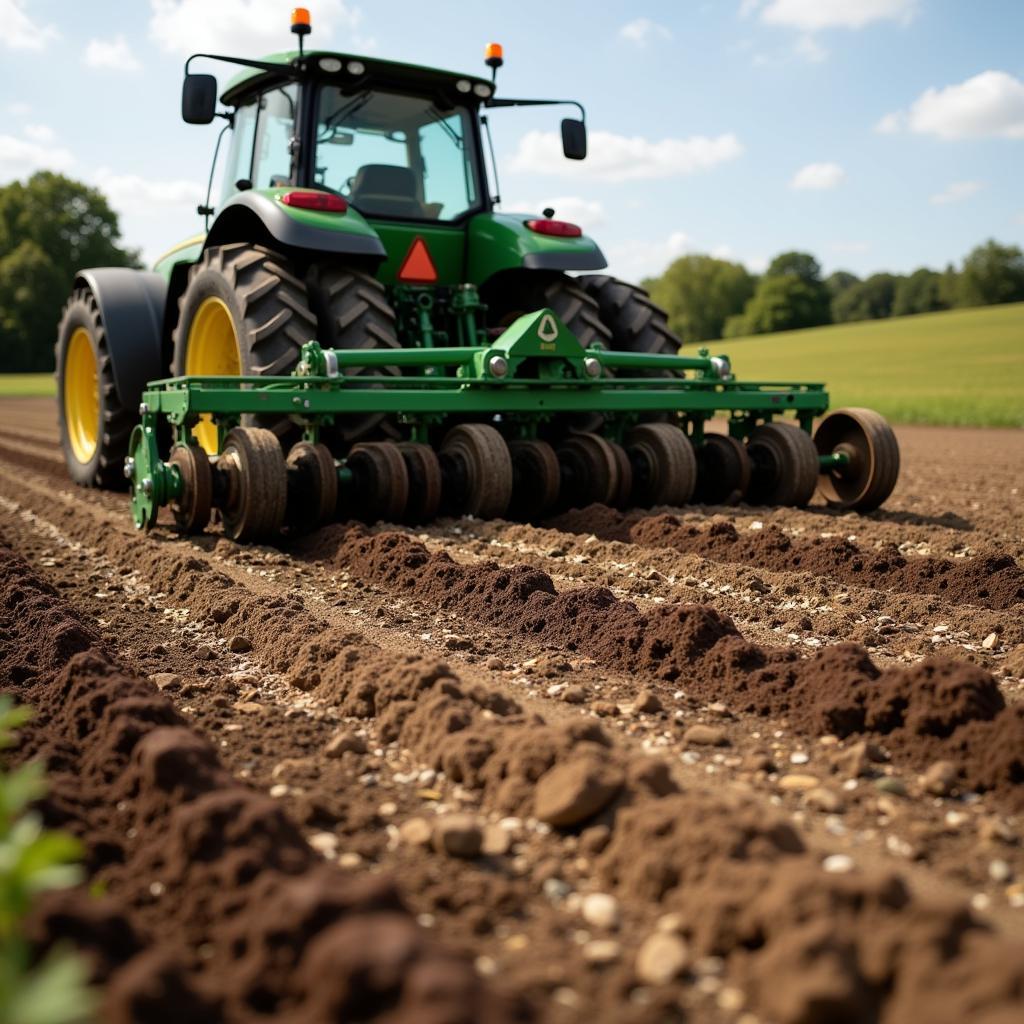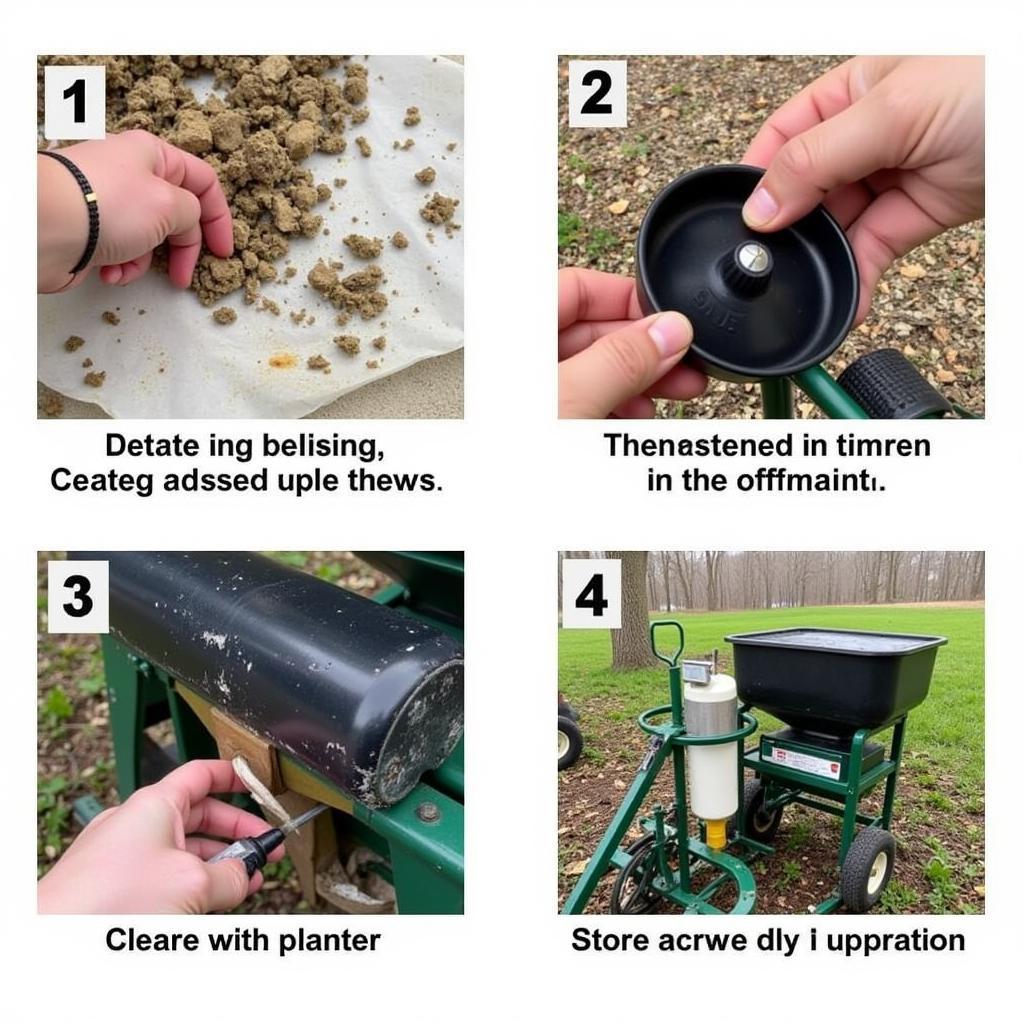Creating a successful food plot is about more than just scattering seeds; it requires the right equipment. Selecting the Best Food Plot Planter can make the difference between a flourishing wildlife haven and a sparsely populated patch. This guide will delve into the essentials of choosing the best food plot planter for your needs, helping you cultivate a vibrant ecosystem that attracts and sustains deer, turkey, and other wildlife.
Understanding Your Food Plot Needs
Before diving into the specifics of food plot planters, it’s crucial to assess your individual needs. What’s the size of your plot? What type of terrain are you working with? What kind of wildlife are you trying to attract? Answering these questions will help you narrow down the options and choose a planter that’s perfectly suited to your environment and goals. For example, a small, hand-held spreader might be sufficient for a backyard plot, while a larger, ATV-pulled planter would be necessary for a multi-acre field. Consider the type of seed you’ll be planting as well. Smaller seeds, like clover, require a different planting depth and distribution than larger seeds, like corn.
Types of Food Plot Planters
Food plot planters come in various shapes and sizes, each designed for a specific purpose. Here’s a breakdown of the most common types:
Hand-Held Broadcast Spreaders
These are ideal for smaller plots and are relatively inexpensive. They’re great for spreading seed and fertilizer evenly, but they can be time-consuming for larger areas.
ATV-Mounted Spreaders and Planters
For medium-sized plots, ATV-mounted spreaders offer a good balance between efficiency and cost-effectiveness. They allow you to cover more ground quickly and evenly, making them a popular choice among landowners. atv food plot attachments offers a wider selection of options.
Tractor-Pulled Seed Drills
For large-scale food plots, tractor-pulled seed drills are the most efficient option. These planters precisely place seeds at the correct depth and spacing, optimizing germination and growth. While they are a more significant investment, they offer the best results for large properties.
 Tractor Pulled Food Plot Seed Drill in Action
Tractor Pulled Food Plot Seed Drill in Action
Key Features to Consider
When selecting a food plot planter, look for features that enhance efficiency and performance:
- Adjustable Seed Rate: This allows you to control the amount of seed dispersed, preventing waste and ensuring optimal plant density.
- Durable Construction: A robust build ensures your planter can withstand the rigors of outdoor use and last for years to come.
- Easy Calibration: Accurate calibration is essential for even seed distribution and successful food plot establishment.
“A properly calibrated planter is the cornerstone of a successful food plot,” says John Miller, a wildlife biologist with over 20 years of experience. “It ensures efficient seed usage and maximizes the potential for a thriving habitat.”
Maintaining Your Food Plot Planter
Proper maintenance will prolong the life of your planter and ensure optimal performance. Clean your planter thoroughly after each use to prevent rust and corrosion. Store it in a dry, protected area to shield it from the elements. Regularly inspect moving parts and lubricate them as needed.
plant food sprayer for hose can be useful for maintaining the health of your food plot.
 Maintaining Your Food Plot Planter for Longevity
Maintaining Your Food Plot Planter for Longevity
Conclusion
Choosing the best food plot planter is a crucial step in creating a vibrant and productive wildlife habitat. By considering your specific needs, understanding the different types of planters, and focusing on key features, you can invest in a tool that will help you achieve your food plot goals for years to come. With the right food plot planter, you’ll be well on your way to establishing a thriving ecosystem that attracts and nourishes wildlife. Remember [best food plot planter] is the one that suits your specific needs. Check out food plot seed on sale for deals on seeds.
FAQs
- What’s the best planter for a small food plot?
- What type of planter is best for rocky terrain?
- How do I calibrate my food plot planter?
- What maintenance is required for a food plot planter?
- Where can I find replacement parts for my planter?
- How often should I plant my food plot?
- What are the best seeds to use for attracting deer?
Need help with your food plot? Contact us! Phone: 02437655121, Email: minacones@gmail.com. Visit us at: 3PGH+8R9, ĐT70A, thôn Trung, Bắc Từ Liêm, Hà Nội, Việt Nam. We have a 24/7 customer service team.
“Choosing the right planter can save you time and money in the long run,” adds Sarah Johnson, a seasoned hunter and food plot enthusiast. “Investing in quality equipment is key to creating a successful and sustainable food plot.” You might want to check out best fertilizer for corn food plots for tips on maximizing your yield.